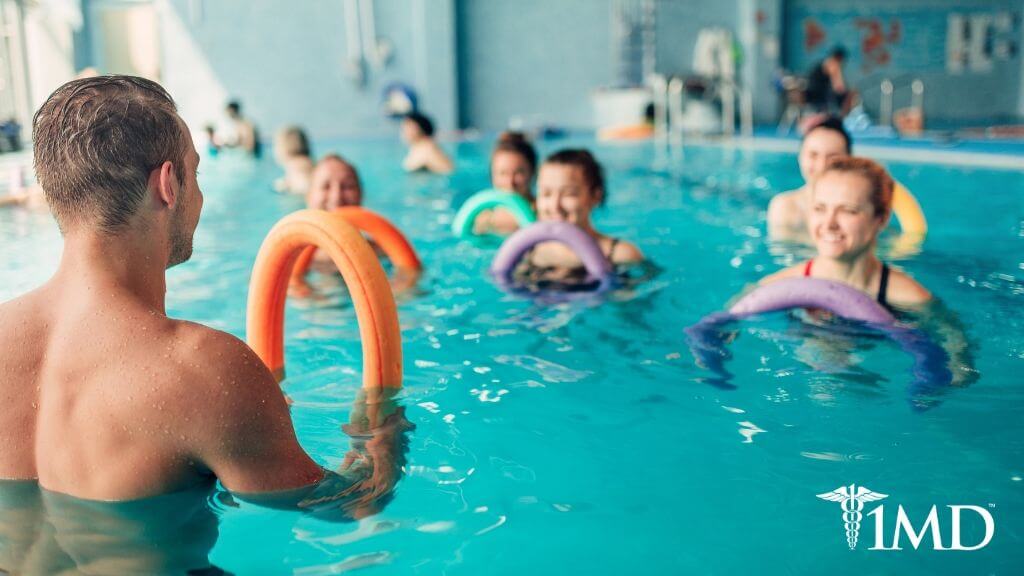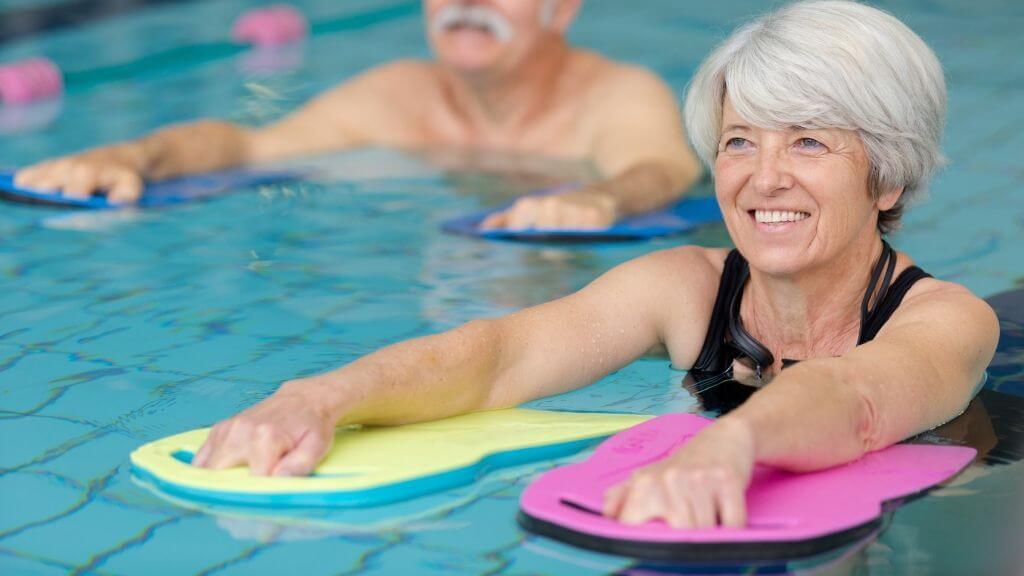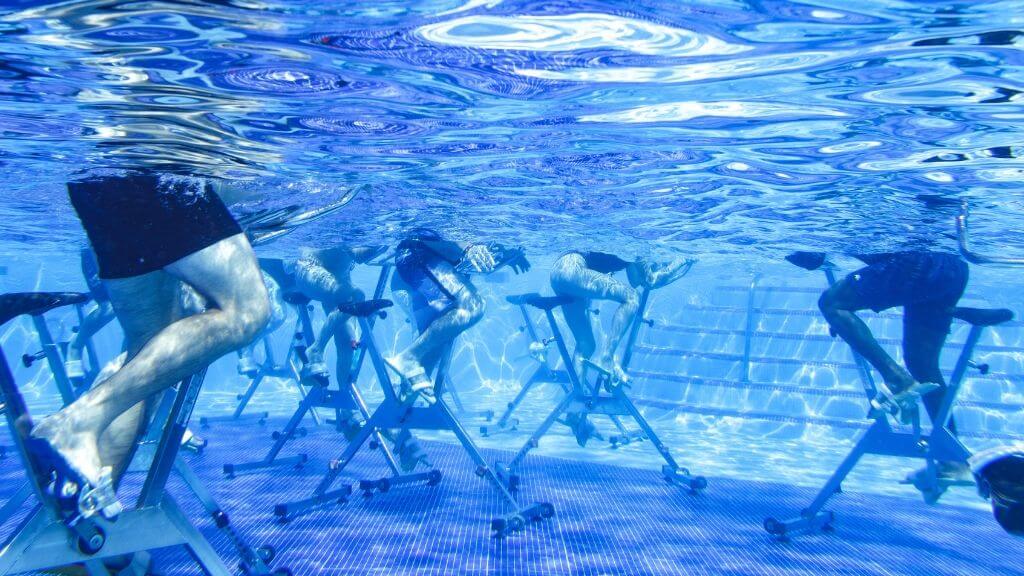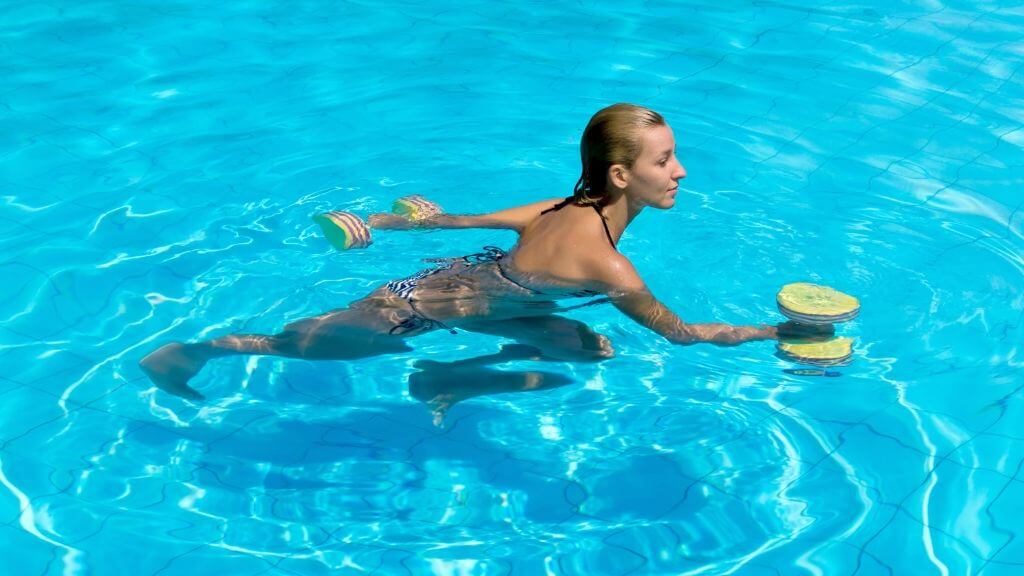Water Exercise: The Perfect Activity for Natural Arthritis Relief
7 minute read
Arthritis is one of the most common causes of pain and discomfort in the United States. Millions suffer from some form of arthritis, and it can cause severe disruption to quality of life.
There’s no true cure for arthritis, but relief can be found in various medications and natural supplements that work to reduce inflammation. There are even certain exercises that can help relieve pain and boost joint health.
How Arthritis Impacts Your Life
Arthritis is a collection of conditions marked by inflammation of the joints. As a result, the joints become swollen and difficult to move.
Arthritis also causes damage to the cartilage around your joints, which prevents fluid movements and allows bones to rub against each other. This, combined with the swelling, is very painful and can prevent you from doing even the smallest of tasks.
Over time, the bones and tissues around your joint can become so degraded that your risk for serious injury and falling increases. While arthritis cannot be cured, there are medications as well as therapies to help alleviate the pain and restore health to your joints.
Exercise is one such way to help repair joint damage, although it’s important to take it slowly. In addition to this, you want to try joint health supplements that support the joint and foster its repair from within.

When it comes to choosing a joint health supplement, there are key ingredients you want to look for. You also want to be sure you get a clinically-proven and high-quality supplement so that your joints get the best possible care. The best joint supplements will contain:
Boswellia Serrata
This is a natural herb that has been proven to reduce joint pain, and it works to restore strength and mobility to arthritic joints.
| Related: Side Effects to Boswellia Serrata? What You Should Know |
Collagen
Collagen is a natural part of your joints, but this gets degraded by arthritis. Be sure to find a supplement with bioenhanced collagen, as it works better than glucosamine and chondroitin to restore joint health, especially when paired with the antioxidant astaxanthin.

You may not feel like moving, but exercise is good for arthritic joints. Not only can it help to reduce inflammation, but it improves strength and mobility as well as flexibility. Without regular exercise, stiff and inflamed joints can become seriously damaged.
Studies have found that very few people with arthritis get the exercise they need, and this is likely because the pain is a significant deterrent.
Running on a treadmill or lifting weights can seem challenging, and these workouts may worsen your pain, but these are not your only exercise options. If the thought of exercise alone makes your joints hurt, try exercising in water.
There are several established reasons as to why exercising in water will help your arthritis, and get you moving again.
♦ The buoyancy of water supports your weight, so there is less stress on your joints as you move.
♦ Water creates natural resistance, so your muscles get a workout without the strain of heavy weights.
♦ If you have access to a heated pool, the warmer water helps to soothe your achy joints both during and after the workout.
The Best Water Exercises for Arthritis
Swimming Laps
Swimming laps is one of the most common and most effective water exercises for arthritis. Not only do your joints get exercise, but swimming laps provides a whole body workout, and it’s especially good for your heart.
Just remember to start slow with a couple of laps and gradually build up your endurance. Overdoing it is not good for you and will hurt your joints rather than heal them. You also need to make sure you take a small rest between laps to restore energy levels.
Water Aerobics
You can also opt for a water aerobics class to help ease your arthritis pains. Most gyms and public swimming pools offer water aerobics classes, and the schedules are varied. Working out in a group can be very motivational and fun, as it inspires socializing and support.
Water aerobics can take the form of Tai Chi, Pilates, yoga, and even Zumba. There’s something for everyone.
You can also look into water exercise classes taught by a qualified instructor. The advantage of these classes is that the instructor can guide you safely through the exercises, and they can help you develop a personalized program for your needs and abilities.
The classes are designed for all ages and fitness levels, and all exercises taught are perfectly suited to individuals with arthritis pains.
Water Walks
If swimming is a struggle, start with walking laps instead. Water walks are another way to get a workout with the support of water. Walking on land is a great exercise, and walking in water is even better because of the natural resistance.
Using the same technique you would use on the street, walk across the pool heel to toe. Water provides 12 times more resistance than air, so you get a great workout for your whole body while you safely exercise your joints.
If you decide to exercise on your own rather than taking an instructed class, speak with your doctor first about what would be best for your condition. There may be a specific movement that you should avoid, even in the water.

Just like regular exercise, all water exercises should begin with a warmup such as a small walk or light stretching. You need to ease your joints into the exercise to avoid further inflammation or damage.
The Bottom Line
Arthritis can be debilitating and prevent you from doing the things you love in life. Inflammation is the main culprit in any type of arthritis, and this can be eased with an anti-inflammatory diet as well as supplements that reduce inflammation and promote joint health.
While you work to heal your joints from within, let water exercises build strength and restore movement to your joints. With the support of water and the right supplements, your joints will benefit, and you’ll be free to do as you please.













